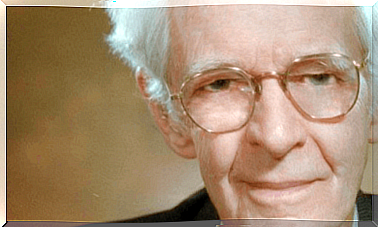Susto Or Espanto: When The Soul Leaves The Body

People from some cultures believe that the soul leaves the body under certain circumstances. The reason for this separation of the soul and the body is susto or espanto. Although the word susto is Spanish, it literally means “fear” or “fright”.
The concept of susto is more complex in some Latin American countries. Susto causes an uncomfortable feeling that lies somewhere between fear and surprise. It comes suddenly and it makes your heart pound in your chest.
Depending on where you grew up, you may or may not be familiar with this idea. However, you probably know the sensations you feel when you think you are in danger or that something is threatening you. Sometimes the danger is real, and sometimes it’s just your perception. The power of performance can also be a highlighted factor.
Nevertheless, some people believe that certain situations cause susto that causes their soul to leave their body. After that happens, they feel unhappy and sick. There are a whole lot of other symptoms they may also experience. Let’s take a closer look at the definition and symptoms of susto.

When the soul leaves the body: The official diagnostic definition of susto
The DSM-5 defines susto as a cultural explanation for unhappiness and adversity, prevalent among some Latin Americans in the United States and people in Mexico, Central America, as well as South America. However, Latin Americans in the Caribbean do not recognize this as a disease.
Susto is a disease attributed to a frightening event that causes the soul to leave the body and it results in unhappiness and illness. Individuals with susto also experience significant strains in crucial social roles.
Although susto has no official symptoms, the symptoms people tend to describe are the following:
- Changes in appetite
- Problems sleeping or sleeping too much
- Disturbing dreams
- Sadness
- Low self-esteem
- Interpersonal sensitivity
- Lack of motivation
- Somatic symptoms, including muscle soreness and pain, cold extremities, pallor, headache, abdominal pain and diarrhea

Origin and typology of Susto or Espanto
The events that force this state are different. In general, they include a natural phenomenon, animals, interpersonal situations, and supernatural beings among other things.
DSM-5 identified three types of susto (known as cibih in Zapotec language). Each of them has a different relationship to the psychiatric diagnosis.
- Interpersonal staff. Characterized by feelings of loss, rejection or not feeling loved by family. Symptoms include sadness, negative self-esteem and suicidal thoughts. Interpersonal susto seems to be closely related to major depressive disorder.
- When susto occurs on the background of a traumatic event that played a fundamental role in the onset of symptoms and the emotional processing of the experience, it seems more appropriate to diagnose it as a post-traumatic stress disorder.
- Susto is characterized by recurrent somatic symptoms (the patient visits several doctors for medical attention related to it). Experts consider it to be similar to a disorder with somatic symptoms.
Traditional categories of susto
People who suffer from this condition experience really intense suffering. The cultures that have documented cases of susto or espanto sometimes attribute magical elements to it. The Tzotzilians, for example, divide this kind of event into three categories:
- Xi-el. The soul does not leave the body.
- Komel. The fear comes from a fall. The soul leaves the body and is seized by the earth.
- Ch’ulelal. The soul leaves the body, but no one knows where it is going. It could be in heaven, in the world, in another city or someone might have sold it.
In conclusion, this phenomenon deserves further research and consideration from the scientific community. Of course, researchers need to study it according to the context, taking into account the strong cultural components of susto .









